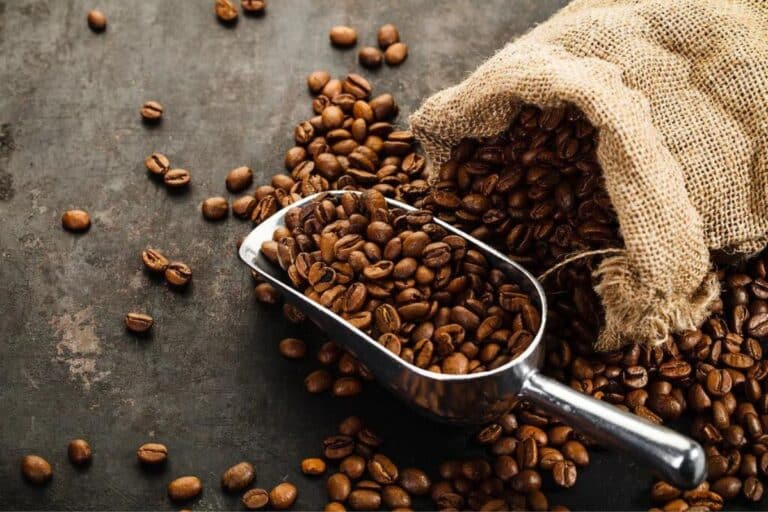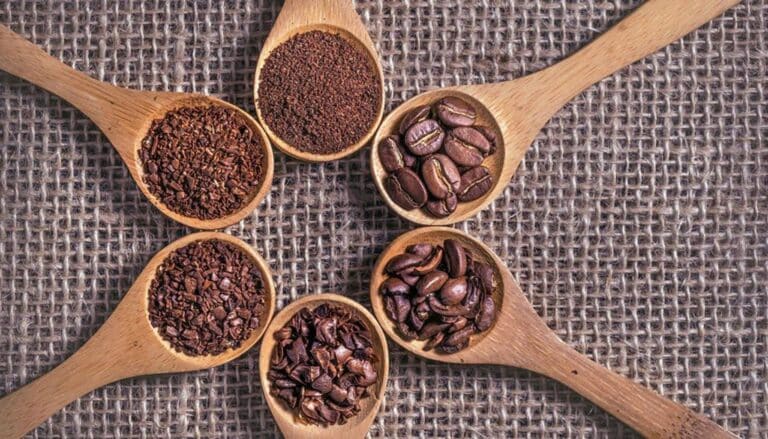In recent years, people have started loving specialty coffee a lot more, moving away from the regular, mass-produced kinds that used to be everywhere. This change shows that folks are really into high-quality, handmade coffee that brings new and exciting flavors and experiences. At the heart of this big move are two important types of coffee: Coffee Blends and Single Origin Coffees. These aren’t just fancy words; they stand for different ways of growing, making, and brewing coffee, each with its own special flavors and stories.
When people make Coffee Blends, they mix beans from different places, sometimes even different countries, to get a flavor that stays the same all the time. This mixing lets the makers show off the best parts of each bean, trying to get a smooth and well-rounded cup of coffee that a lot of people will like. Blends aim to keep the same taste all year, no matter what happens with the crops or if beans are hard to get.
On the flip side, Single Origin Coffees focus on being open about where they come from, right down to a specific farm, area, or country, without mixing in beans from other places. These coffees are famous for their one-of-a-kind flavors that come from the very place they grow – like the weather, what the ground is like, and other natural things, a concept known as terroir. Single origin coffees give coffee lovers a chance to taste their way through different parts of the world, enjoying the special flavors and smells each place gives its beans.
The fact that more people are choosing specialty coffee shows that coffee drinkers all over the world are looking for unique, high-quality cups of coffee. The differences between Coffee Blends and Single Origin Coffees are really important in this scene, offering a bunch of different flavors and experiences for all the different tastes coffee fans have. As we get to know more about these types of coffee, it’s clear that the specialty coffee world is as deep and interesting as the drink itself. It’s a world that invites everyone, from experts to folks who just like a good cup of coffee, to dive in, try different kinds, and enjoy all the great tastes and stories coffee has to share.
What’s the Difference Between Coffee Blends vs. Single Origin?
Single origin coffee is sourced from one specific location, offering a unique and distinctive flavor profile that reflects its geographical origin, with availability often limited to the harvest season of that region. Coffee blends combine beans from multiple locations to create a consistent and balanced flavor profile, aiming for consistency in taste across different batches.
Defining Single Origin and Coffee Blends

Single Origin Coffees
Definition and Characteristics
Single Origin Coffees come from one place, which might be a whole country or just one farm or estate. People love these coffees because they really show off the special flavors and qualities that come from where they grow. Things like the soil, weather, and how high up they are – all of this together is called terroir. These coffees don’t get mixed with beans from other places, so you get to taste exactly what makes their home spot special.
Depending on where they’re from, Single Origin Coffees can taste really different. For example, Ethiopian beans might remind you of flowers and tea, while Brazilian coffees could taste more like nuts and chocolate. These coffees usually have a brighter acidity and a more complex set of flavors than blends, making them a unique choice for those who like to explore different tastes.
Reasons why coffee enthusiasts might prefer single origin
- Traceability and Transparency: Single origin coffees provide coffee lovers with a clear trace of the coffee’s journey from bean to cup, offering a deeper understanding and appreciation of the coffee’s background.
- Unique Flavor Profiles: These coffees allow enthusiasts to experience and savor the unique tastes and aromas that are inherent to specific regions.
- Educational Experience: Each single origin coffee can be an educational journey, offering insights into the impact of terroir on coffee flavor.
- Supporting Farmers: Purchasing single origin coffee often means supporting smaller farms and communities, contributing to more sustainable and equitable coffee production practices.
Coffee Blends
Definition and Characteristics
Coffee Blends are created by mixing coffee beans from multiple origins to achieve a harmonious balance of flavors. The aim of blending is to produce a consistent taste profile that can be enjoyed year-round, regardless of the seasonal variations in single origin coffee crops. Blends can combine beans with complementary characteristics, such as body, acidity, and flavor notes, to create a complex and well-rounded cup.
The characteristics of a blend depend on the roaster’s vision and the beans selected. A blend might aim for a smooth, balanced profile suitable for espresso or a bold, rich flavor ideal for drip coffee. The possibilities are endless, making blends a versatile choice for both coffee enthusiasts and casual drinkers.
The Art and Science behind Blending Coffee
- Consistency: One of the primary goals of blending is to achieve a consistent flavor profile that customers can rely on throughout the year.
- Complexity and Balance: Blending allows roasters to craft a coffee that balances acidity, body, and flavor notes, creating a complex and engaging cup that highlights the best qualities of its components.
- Creativity: Blending is a creative process that gives roasters the opportunity to experiment with different combinations of beans to achieve unique and delicious results.
- Accessibility: Blends often aim to appeal to a broad audience, offering a flavor profile that is approachable and enjoyable for many coffee drinkers.
Both single origin coffees and coffee blends offer unique experiences and cater to different preferences within the coffee community. Whether seeking the distinct taste of a single origin or the balanced complexity of a blend, coffee lovers have a wealth of options to explore and enjoy.
The Origins of Single Origin and Coffee Blends

Single Origin
Focus on Traceability and Origin Specifics
Single origin coffees pride themselves on their traceability, offering coffee drinkers detailed information about where the coffee was grown, including the farm’s name, the region, or even the specific plot of land. This level of detail not only enhances the coffee drinking experience by providing a story behind the cup but also promotes transparency in the coffee supply chain. Consumers can learn about the cultivation practices, the altitude at which the coffee was grown, and the varietal of the coffee plant, all of which contribute to the coffee’s final taste.
How Location Affects Flavor Profile
The location of a single origin coffee plays a crucial role in shaping its flavor profile. The concept of terroir—the environmental conditions, especially soil and climate, where the coffee is grown—has a significant impact on the coffee’s characteristics. For example:
- Altitude: Higher elevations often produce beans with more acidity and floral notes, whereas lower elevations yield beans with fuller bodies and more chocolate or nutty flavors.
- Soil Composition: The minerals and nutrients present in the soil can influence the coffee’s sweetness and fruitiness.
- Climate: The amount of rainfall, temperature, and humidity affect the growth cycle of the coffee plants, influencing the density and size of the beans, which in turn affects the flavor.
These elements combined give each single origin coffee its unique flavor profile, allowing enthusiasts to explore tastes ranging from bright and acidic to rich and earthy.
Coffee Blends
Making a Coffee Blend Taste the Same Every Time
The big goal of making coffee blends is to keep the taste the same with every batch, all year long. This is super important for coffee brands and cafes that want their customers to count on getting the same great taste every time. Roasters pick and mix beans from different places so they can keep the coffee tasting the same, even when the single origin coffees they use might taste different with each season.
Mixing Beans from Different Places for a More Interesting Taste
By mixing beans from here and there, roasters make coffees that taste interesting and full of different flavors. For example, they might mix a bean that’s really bright and flowery from one place with a bean that tastes like chocolate and feels rich from another place. This mix makes a coffee that brings out the best parts of each bean, creating a taste that’s complex and much more interesting than just one kind of bean could make.
Blends aren’t just to hide not-so-great beans. Instead, they’re like a big flavor party where every bean brings something special to the table. This mix of tastes is why so many people like blends—they get a coffee that’s easy to like and has something for everyone. With their blending skills, roasters get to show off how creative they can be, making all kinds of coffee that celebrate how awesome and different coffee can be.
Flavor Profiles of Single Origin and Coffee Blends

Single Origin
The Impact of Terroir on Flavor
Terroir plays a pivotal role in defining the flavor profile of single origin coffees. This French term, borrowed from the wine industry, refers to how a particular region’s climate, soils, and aspect (terrain) affect the taste of the coffee. Just as in wine, coffee beans reflect their terroir, resulting in distinct flavors that can vary dramatically from one region to another.
- Climate: Temperature and precipitation patterns influence the coffee cherry’s ripening process, affecting acidity and sweetness levels.
- Soil: The mineral content and fertility of the soil can influence the coffee’s body and flavor nuances.
- Altitude: Generally, higher altitudes produce beans with more acidity and aromatic qualities, while lower altitudes yield beans with a fuller body and milder acidity.
Common Flavor Profiles Associated with Different Regions
- Latin America: Coffees from countries like Colombia, Brazil, and Guatemala often have a balanced body with chocolatey and nutty flavors, complemented by a moderate to high acidity. Colombian coffees, for instance, are known for their smooth, mild flavor and a hint of nutty undertones.
- Africa: Ethiopian and Kenyan coffees are renowned for their floral, fruity, and wine-like characteristics, often with higher acidity and vibrant flavors that can include notes of berry (Ethiopia) or citrus and tomato (Kenya).
- Asia/Pacific: Indonesian and Sumatran coffees are famous for their full body, low acidity, and earthy, woody, and sometimes spicy flavors.
Coffee Blends
Crafting a Balanced and Harmonious Flavor
The art of creating coffee blends lies in achieving a balanced and harmonious flavor that can appeal to a broad spectrum of tastes. Blenders combine beans with complementary flavor profiles to create a cup that is more complex and rounded than its individual components. The goal is to enhance desirable characteristics (such as sweetness, acidity, body) and minimize less desirable ones (such as bitterness).
Examples of Popular Blend Profiles
- Breakfast Blend: Often a light to medium roast designed to be smooth, mellow, and approachable, with a balanced acidity and body to start the day off gently.
- Espresso Blend: Typically a dark roast with a strong, bold flavor intended for espresso brewing. These blends are crafted to produce a rich crema and balance the espresso’s natural bitterness with a touch of sweetness or acidity.
- House Blend: The signature blend of a cafe or roaster, designed to showcase a balanced, versatile flavor profile that can appeal to a wide audience. House blends are often medium roasted to highlight both acidity and body.
- Seasonal Blend: A special offering that changes with the seasons, reflecting the best of what’s currently available. These blends might emphasize fresh, vibrant flavors in the spring or richer, more comforting notes in the fall.
Both single origin coffees and coffee blends provide a vast spectrum of flavors and experiences. Single origins offer a deep dive into the unique characteristics of specific regions, while blends provide a consistent and balanced cup that can cater to a variety of preferences. This diversity is what makes exploring coffee so rewarding and endlessly fascinating.
Brewing Considerations of Single Origin and Coffee Blends

Single Origin
Recommended Brewing Methods for Highlighting Unique Flavors
Single origin coffees, with their distinct and nuanced flavor profiles, are best enjoyed through brewing methods that can highlight these unique characteristics. Here are a few recommended methods:
- Pour-Over: Ideal for accentuating the intricate flavors and aromas. The slow and controlled brewing process allows for the extraction of the coffee’s bright acidity and complex notes.
- Aeropress: Offers a rich and smooth cup, allowing the subtle flavors and aromas of single origin coffee to shine. Its versatility in brewing styles (from espresso-like to clean and tea-like) makes it a great choice.
- French Press: While it produces a fuller body, it can also showcase the coffee’s inherent flavors, especially for beans with chocolatey or earthy notes.
How to Experiment with Brewing Parameters
Experimenting with brewing parameters is key to unlocking the full potential of single origin coffees. Consider adjusting:
- Grind Size: Finer grinds for a more intense flavor or coarser grinds for a lighter taste. The grind size can dramatically affect the extraction rate and, consequently, the taste.
- Water Temperature: Slightly cooler water (around 195°F to 205°F) is ideal, as too hot can over-extract and too cool can under-extract.
- Brew Time: Varying the contact time between the coffee and water can highlight different aspects of the coffee’s flavor profile.
- Water Quality: Use filtered water to ensure that no external flavors interfere with the coffee’s natural taste.
Coffee Blends
Versatility in Brewing Methods
Coffee blends are crafted to be versatile and balanced, making them suitable for a wide range of brewing methods. Whether you prefer a bold espresso or a smooth drip coffee, blends are designed to perform well across different techniques, providing a consistent and enjoyable cup every time.
Best Practices for Brewing Blends
- Espresso Machine: Many blends are designed with espresso in mind, aiming for a rich, full-bodied shot with a beautiful crema. Experiment with the grind and tamping pressure to achieve the perfect extraction.
- Drip Coffee Maker: A reliable choice for brewing blends, drip coffee makers can produce a clean and consistent cup. Use a medium grind size for optimal extraction.
- Cold Brew: Blends are also great for cold brewing, which highlights their smooth and sweet characteristics while minimizing acidity and bitterness.
No matter the brewing method, starting with the right grind size for your method of choice and adjusting the coffee-to-water ratio to taste are crucial steps. For blends, consider beginning with a 1:16 coffee-to-water ratio and adjust according to your preference for strength. Experimenting with temperature and brew time can also help in fine-tuning the flavor profile to best suit the blend’s characteristics and your personal taste preferences.
Both single origin coffees and coffee blends offer unique experiences that can be enhanced through thoughtful brewing. Whether you’re savoring the distinct profile of a single origin or enjoying the balanced complexity of a blend, experimenting with different brewing methods and parameters can lead to a more rewarding coffee experience.
Seasonality of Single Origin and Coffee Blends

Single Origin
Seasonal Variations and Their Impact on Availability and Taste
Single origin coffees are highly influenced by seasonal variations, as coffee beans are typically harvested once or twice a year, depending on the geographic location. These seasonal cycles not only affect the availability of specific single origin coffees but can also have a notable impact on their flavor profiles. For instance:
- Freshness: Coffee is at its peak flavor shortly after harvest and processing. Freshly harvested beans can offer more vibrant flavors and aromas.
- Taste Variation: Seasonal weather changes can affect the taste of the coffee from the same farm from year to year. Factors like rainfall, temperature, and sunshine hours can influence the development of sugars in the coffee cherries, affecting the sweetness and acidity of the coffee.
This seasonality means that single origin offerings are often rotating, with coffee shops and roasters frequently introducing new beans to their lineup as different crops are harvested. For enthusiasts, this provides an exciting opportunity to explore a wide range of flavors throughout the year.
Coffee Blends
How Blends Adapt to Changes in Coffee Crop Seasons
Coffee blends offer a solution to the seasonality and varying availability of single origin coffees. Blends are designed to deliver a consistent flavor profile year-round, despite the seasonal changes in the characteristics of individual components. Roasters achieve this by:
- Adjusting Components: As the characteristics of coffee from one origin change or become unavailable, roasters can substitute them with beans of a similar profile from another origin, maintaining the overall flavor of the blend.
- Balancing Flavors: By mixing beans from different origins, roasters can balance seasonal flavor variations, ensuring that the blend remains consistent in taste and quality throughout the year.
This approach allows coffee drinkers to enjoy their favorite blends at any time, without significant changes in flavor or quality. It also showcases the skill of the roaster, who must carefully select and combine different coffees to achieve the desired profile, taking into account the evolving nature of the component beans.
In summary, the impact of seasonality on coffee extends beyond just the availability of specific origins. It influences the taste and character of single origin coffees and requires skillful adaptation and creativity from roasters to maintain the consistency of coffee blends. This dynamic interplay between seasonality and coffee production enriches the coffee experience, offering both challenges and opportunities for coffee producers, roasters, and enthusiasts alike.
Price Points of Single Origin and Coffee Blends

The pricing of coffee, whether single origin or blends, reflects a myriad of factors including production costs, rarity, quality, and the complexities involved in sourcing and roasting. Understanding these factors can help coffee consumers appreciate the value behind the price of their favorite brews.
Single Origin Coffees
Pricing Trends
- Generally Higher Prices: Single origin coffees often command higher prices compared to blends. This is due to several factors such as the cost of sourcing beans from specific farms or regions, limited availability, and the often higher quality and unique flavor profiles of these coffees.
- Quality and Rarity: The price of single origin coffees can also reflect the rarity and quality of the beans. Specialty coffees from sought-after locations or rare varietals can be more expensive due to their unique characteristics and the limited quantity available.
- Traceability and Ethical Sourcing: The emphasis on traceability and ethical sourcing practices in single origin coffee production can also contribute to higher costs. Ensuring fair compensation for farmers and sustainable farming practices often means that consumers will pay a premium for these coffees.
Understanding the Value
Purchasing single origin coffee is often seen as an investment in quality, ethics, and the coffee drinking experience. Consumers are not just buying a bag of coffee; they are supporting sustainable agricultural practices, fair compensation for farmers, and the preservation of unique coffee varietals.
Coffee Blends
Pricing Trends
- More Accessible Price Points: Coffee blends tend to be more affordable than single origin coffees. The ability to mix beans from various origins allows roasters to create a consistent flavor profile while managing costs, making blends more accessible to a wider range of consumers.
- Economies of Scale: Blends can be produced in larger quantities since they are not limited to the yield of a single farm or region. This scalability can lead to lower prices for consumers without necessarily compromising on quality.
Understanding the Value
The value of coffee blends lies in their consistency and versatility. Roasters skillfully combine beans to achieve a balance of flavors that can appeal to many palates. Blends are designed to provide a reliable and enjoyable coffee experience, making them a staple for many households and coffee shops. Additionally, the art and science behind creating blends showcase the roaster’s expertise, offering consumers a meticulously crafted product at a more accessible price point.
Overall Comparison

The difference in price points between single origin coffees and blends reflects the broader diversity within the coffee industry. While single origin coffees offer an exploration of unique flavors and support ethical and sustainable practices, blends provide consistency and accessibility. Understanding these factors helps consumers make informed choices based on their preferences, values, and budget, appreciating the value that both single origins and blends bring to their coffee experience.
Environmental and Ethical Considerations
The coffee industry faces several environmental and ethical challenges, from the impacts of climate change on coffee production to the socio-economic issues affecting coffee farmers. As awareness grows, sustainability and ethical practices have become increasingly important to consumers, producers, and roasters alike. These considerations play a crucial role in making informed choices about coffee, whether single origin or blends.
The Role of Sustainability in Coffee Production
Sustainable Farming Practices: Sustainable agriculture in coffee production involves practices that are environmentally friendly, conserve water, reduce chemical use, and preserve local ecosystems. Shade-grown coffee, for example, not only produces a higher quality bean but also supports bird habitats and biodiversity.
Climate Change Mitigation: Coffee is highly sensitive to temperature changes and precipitation patterns, making it vulnerable to climate change. Sustainable practices include adapting cultivation methods to changing environmental conditions and implementing measures to reduce carbon footprints.
Economic Sustainability: Beyond environmental impact, sustainability also encompasses economic aspects, ensuring that coffee farmers receive fair compensation for their work. This supports their livelihoods and contributes to the overall development of coffee-producing communities.
Making Ethical Choices Between Single Origins and Blends
Single Origin Coffees:
- Traceability and Direct Trade: Single origin coffees offer greater traceability, allowing consumers to know where their coffee comes from and how it was produced. Opting for single origin coffees from roasters who engage in direct trade practices can ensure that farmers are fairly compensated.
- Supporting Small-Scale Farmers: Purchasing single origin coffees can also support small-scale farmers, preserving unique coffee varietals and contributing to biodiversity.
Coffee Blends:
- Sustainable Blends: Many roasters now offer blends that are sustainably sourced, combining beans from different origins that adhere to environmental and ethical standards. These blends can provide a balance of supporting ethical practices while enjoying a consistent flavor profile.
- Certifications: Look for blends with sustainability certifications such as Rainforest Alliance, Fair Trade, or Organic. These labels indicate that the coffee meets specific standards related to environmental protection, social equity, and economic fairness.
General Considerations:
- Research and Transparency: Regardless of preference for single origins or blends, consumers can make ethical choices by researching brands and roasters for their commitment to sustainability and ethical practices.
- Supporting Local Roasters: Purchasing coffee from local roasters who prioritize sustainability can reduce transportation emissions and support local businesses committed to ethical sourcing.
By making informed decisions based on environmental and ethical considerations, coffee consumers can contribute to the sustainability of the coffee industry and the well-being of communities involved in coffee production. Whether choosing single origin coffees for their unique flavors and traceability or opting for blends for their consistency and broad appeal, there are options available that align with sustainable and ethical practices.
Conclusion
Exploring the world of coffee takes you on an adventure full of variety, complexity, and passion. At the center of this adventure are two main types of coffee: single origin coffees and coffee blends. Each brings its own unique experiences, flavors, and stories. Getting to know the differences between them can make your coffee drinking even better, giving you a peek into the art and science behind making, roasting, and brewing coffee.
Key Differences Recap:
- Traceability and Origin: Single origin coffees let you know exactly where they come from, straight from a specific farm or area right to your cup. This clear path lets coffee fans taste the special flavors that come from the coffee’s original place.
- Flavor Profile: Single origin coffees give you clear, detailed flavors that show off where they were grown. On the other hand, coffee blends mix beans from different places to create a smooth, even flavor that many people like.
- Seasonality and Availability: Single origin coffees change with the seasons, giving you a changing tasting experience as different coffees are harvested. Blends keep things steady all year by mixing up the beans they use when needed.
- Price Points and Accessibility: Single origin coffees usually cost more because they’re special, not as common, and take more care to make and find. Blends are easier to get and come in a variety of prices, making them a good choice for more people.
- Environmental and Ethical Considerations: Both single origin and blend coffees can be good for the planet and fair to the people who grow them, depending on how they’re sourced and made. You can help by choosing coffees with certifications that show they’re traded fairly and grown in ways that don’t hurt the earth.
As we wrap up our coffee journey, it’s clear that both single origin coffees and blends have their own special spots for coffee lovers. Whether you love the unique tastes of a single origin coffee that feels like a trip to where it was grown, or you enjoy the consistent and smooth taste of a great blend, there’s a coffee out there for you.
We encourage all coffee lovers to try both single origins and blends to find what you like best. Play around with how you make your coffee, learn about where your coffee comes from, and take your time enjoying the wide range of tastes each cup can bring. By doing this, you’re not just making your coffee time better; you’re also supporting the hardworking farmers, roasters, and baristas who bring this coffee adventure to life.
Frequently Asked Questions
1. Can I tell the difference between single origin and blend by taste alone?
Yes, often you can! Single origin coffees typically showcase unique, distinctive flavors that reflect their specific growing region, such as floral, fruity, or earthy notes. Blends, on the other hand, aim for a balanced and consistent flavor profile, combining qualities from different origins to create a harmonious taste.
2. Why are single origin coffees generally more expensive than blends?
Single origin coffees are often more expensive due to their limited availability, specific sourcing from particular regions or farms, and the unique, high-quality flavor profiles they offer. Additionally, the focus on ethical sourcing and fair compensation for farmers can also contribute to higher prices.
3. How do seasonal changes affect the flavor of single origin coffee?
Seasonal changes can significantly affect the flavor of single origin coffee, as the growing conditions—such as temperature, rainfall, and soil health—impact the development of the coffee cherries. This can lead to year-to-year variations in flavor, even from the same farm, offering a dynamic tasting experience.
4. Can I use coffee blends for espresso?
Absolutely! Many coffee blends are specifically designed for espresso, crafted to produce a rich, full-bodied shot with a beautiful crema. These blends balance the boldness needed for espresso while ensuring a smooth, enjoyable flavor.
5. How can I make more ethical coffee choices?
Making ethical coffee choices involves seeking out coffees that are sourced in ways that support fair compensation for farmers, sustainable farming practices, and environmental conservation. Look for certifications like Fair Trade, Organic, or Rainforest Alliance, and consider supporting local roasters who prioritize direct trade relationships with coffee producers.






